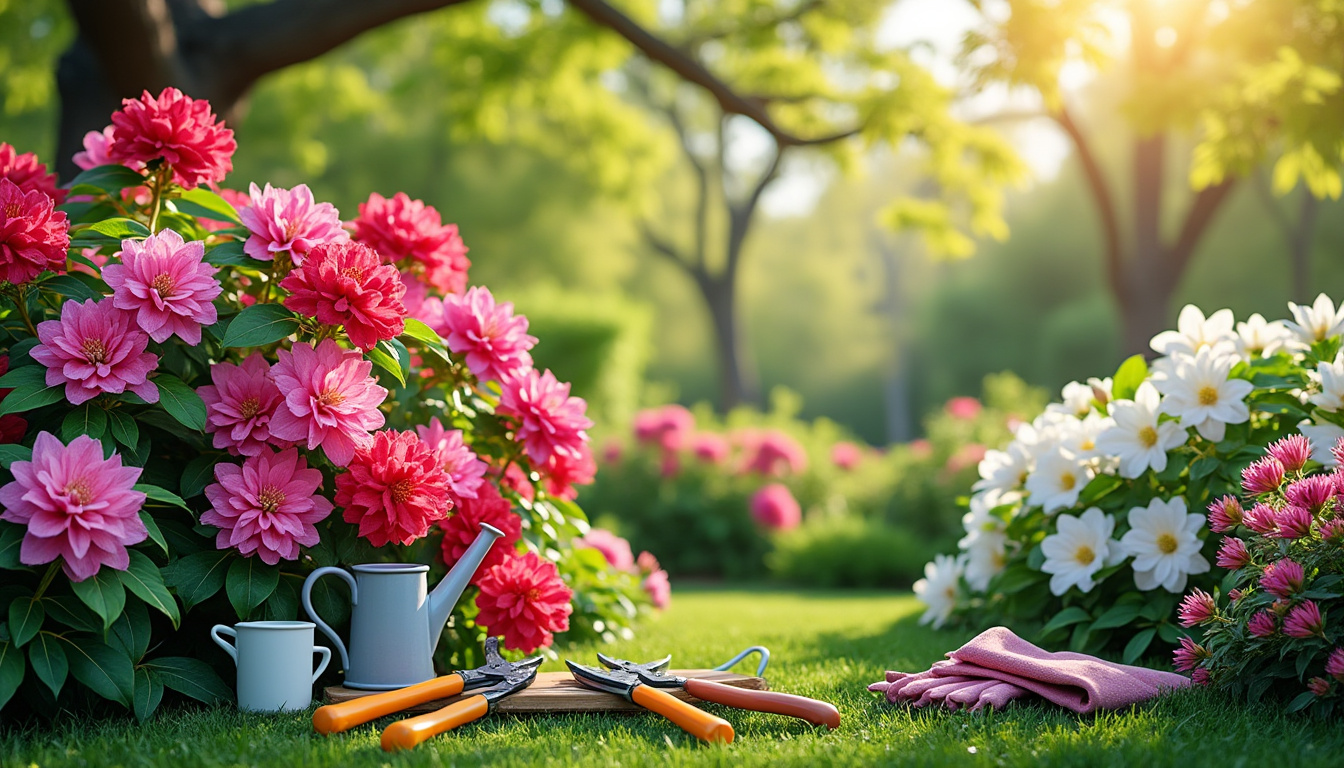Understanding the optimal timing for pruning azaleas is key for enhancing their health and bloom quality. Azaleas, members of the Rhododendron family, boast a stunning sprawl of colors, making them a favorite in many gardens. Careful pruning not only ensures vibrant blossoms but also contributes to robust growth and overall plant vitality. This article delves into the best practices for pruning azaleas, focusing on timing, techniques, and appropriate tools.
When To Prune Azaleas: Timing That Matters
Timing is absolutely critical when it comes to pruning azaleas. The general rule of thumb is to prune azaleas right after they finish blooming in the spring. This approach allows the plant enough time to develop new growth and set flower buds for the following year. It is essential to know that azaleas bloom on old wood, meaning that pruning at the wrong time may result in the loss of next year’s flowers.
Typically, azaleas should be pruned within three weeks after their blossoms fade. Waiting too long can lead to the unintentional removal of flower buds, which tend to develop during the summer season preceding their blooming.
Here are key points regarding ideal pruning timing:
- Late Spring: This is when the majority of azaleas have finished blooming. Aim to complete pruning by early summer to avoid cutting off flower buds.
- Avoid Late Winter: Late winter pruning can be risky as it may expose fresh cuts to fluctuating temperatures, risking damage to the new growth.
- Early Spring Pruning: For significant shaping, early spring—before the plant begins to produce new buds—may be suitable. This technique gives the plant ample time to recover and fill out over the growing season.
Understanding Growth Cycles of Azaleas
Knowing the growth cycle of azaleas aids in determining the best pruning timeline. Azaleas often exhibit two significant growth phases: a period of active growth in spring and another in late summer to early fall. Understanding these phases is vital for preserving flower production while ensuring the health of the shrub.
Active growth predominantly occurs in spring as new foliage unfurls and blooms begin to manifest. By pruning just after the flower cycle concludes, gardeners maximize the opportunity for new growth to reinforce the azalea’s shape and subsequent flower development.
Moreover, azaleas may react differently depending on their variety. Evergreen azaleas, which retain foliage year-round, may require less pruning than deciduous types that shed leaves annually. For gardeners managing multiple varieties, tailoring the pruning schedule to each type can yield the best results.
Crucial Pruning Techniques For Azaleas
Proper pruning techniques can significantly impact the azalea’s health, shape, and flowering. Two fundamental methods, thinning and heading, serve as the primary techniques to enhance growth.
Thinning involves the removal of entire branches or stems. This method focuses on eliminating dead, diseased, or overcrowded sections. By lightening the load, sunlight and air can penetrate more effectively, which helps reduce the risk of disease and promote healthy growth.
Heading refers to trimming the tips of branches to maintain a bush’s shape. This method may not involve removing entire branches but rather shortening them slightly to encourage fuller growth and maintain a compact appearance.
| Technique | Description | Best Time To Apply |
|---|---|---|
| Thinning | Remove entire branches to improve air circulation and sunlight penetration. | Late Spring after blooming |
| Heading | Cut back the tips of branches to maintain shape and promote fullness. | Early Spring or After Blooming |
Caring for the azalea post-pruning is equally important. Applying a slow-release fertilizer follows pruning, thereby providing essential nutrients for recovery and subsequent growth. Options like 12-6-6 fertilizers effectively support the plant during this crucial phase.
Moreover, regularly watering the azaleas, particularly during dry spells, helps revitalize roots and encourages new foliage, ultimately leading to more pronounced blooming in the following season.
When to harvest sweet corn for the best flavor
Tools Required for Pruning Azaleas
Choosing the right tools for pruning azaleas greatly influences the precision and effectiveness of the task. Well-maintained tools can make the difference between a satisfying gardening experience and one fraught with frustration.
- Pruning Shears: A sharp pair of hand pruners is essential for trimming small branches and stems. Look for ergonomically designed handles for comfort during extended use. Brands such as Fiskars or Felco are highly regarded for their durability.
- Loppers: For thicker branches, long-handled loppers provide the necessary leverage. They are ideal for branches up to 2 inches thick. Models from manufacturers like Gardena or Corona Tools can ease the effort during pruning sessions.
- Safety Gear: Safety gloves should always be worn to protect against thorns and sharp edges. In addition, wearing eye protection when pruning ensures safety from debris.
Tool Maintenance for Optimal Pruning
Maintaining gardening tools is fundamental not only for performance but also for plant health. Inadequate tool maintenance can lead to injuries or spread diseases among plants. Some maintenance tips include:
- Regularly sharpen blades of pruning shears and loppers to ensure clean cuts.
- Clean tools after use with a disinfectant to avoid transmitting diseases.
- Store tools in a dry area to prevent rusting and deterioration.
By keeping tools in good shape, gardeners ensure that their plants receive the best care possible while also simplifying the pruning process.
Post-Pruning Care for Azaleas
After the pruning process is complete, specific care practices ensure azaleas regrow healthily and vibrantly. Suited post-pruning care leads to robust plants that can flourish in subsequent seasons.
- Fertilizing: Applying a balanced fertilizer assists in speedy recovery. Silica-rich fertilizers help boost new growth.
- Watering: Newly pruned azaleas greatly benefit from consistent watering to encourage root regeneration and growth.
- Mulching: Adding mulch helps maintain soil moisture and temperature while also suppressing weeds.
| Care Practice | Benefits |
|---|---|
| Fertilizing | Provides essential nutrients for recovery and promotes robust new growth |
| Watering | Encourages root rejuvenation and nutrient absorption |
| Mulching | Helps retain soil moisture while suppressing weeds |
Ongoing care and attentiveness will lead to azaleas that bloom vibrantly year after year, firming their popularity amongst gardeners. By following best practices, an attractive, flourishing garden can be cultivated effortlessly.
Maintenance Tips for Healthy Azaleas
Azaleas, while beautiful and resilient, do require attention to ensure that they remain healthy. There are several maintenance practices that can easily be integrated to complement pruning efforts:
- Regular Monitoring: Keep an eye out for pests or diseases that may compromise the plant’s health.
- Timely Watering: Especially during periods of drought, maintaining adequate moisture is crucial.
- Proper Mulching: Applying the right type of mulch can enhance soil acidity, enriching growth for acid-loving plants like azaleas.
Common Azalea Problems and Solutions
Like many plants, azaleas are susceptible to various issues, making it important to have proactive strategies in place:
- Pest Infestations: Aphids and lace bugs can harm azales. Treat infestations early with appropriate insecticides or organic solutions.
- Leaf Spot Diseases: Fungal diseases can manifest as spots on leaves. Space plants adequately and improve air circulation to limit such occurrences.
- Root Rot: Overwatering may lead to detrimental root rot. Ensure good drainage and water only as needed.
Being proactive about maintenance creates a healthier plant and fosters longevity.
Frequently Asked Questions (FAQ)
Q1: When is the best month to prune azaleas?
A1: Generally, for many regions, the best period to prune azaleas falls between late spring and early summer, generally within three weeks after flowering has concluded.
Q2: Can azaleas be pruned in pots?
A2: Yes, pruning potted azaleas involves cutting off dead or leggy branches and shaping the plant right after blooming. Focus on preserving airflow and maintaining a pleasing shape.
Q3: What is the best tool for pruning azaleas?
A3: Clean, sharp bypass pruners are ideal for making precise cuts on short branches. For thicker stems, use loppers or pruning shears to ensure no damage to the plant.
Q4: How should azaleas be fertilized?
A4: Fertilize azaleas with an acidic fertilizer twice a year, once in early spring and again after blooming concludes. Don’t forget to water adequately after fertilization.
Q5: Is it necessary to prune evergreen azaleas?
A5: Evergreen azaleas do not require heavy pruning after flowering unless they become overgrown. For minor adjustments, you can selectively trim to maintain their shape.













